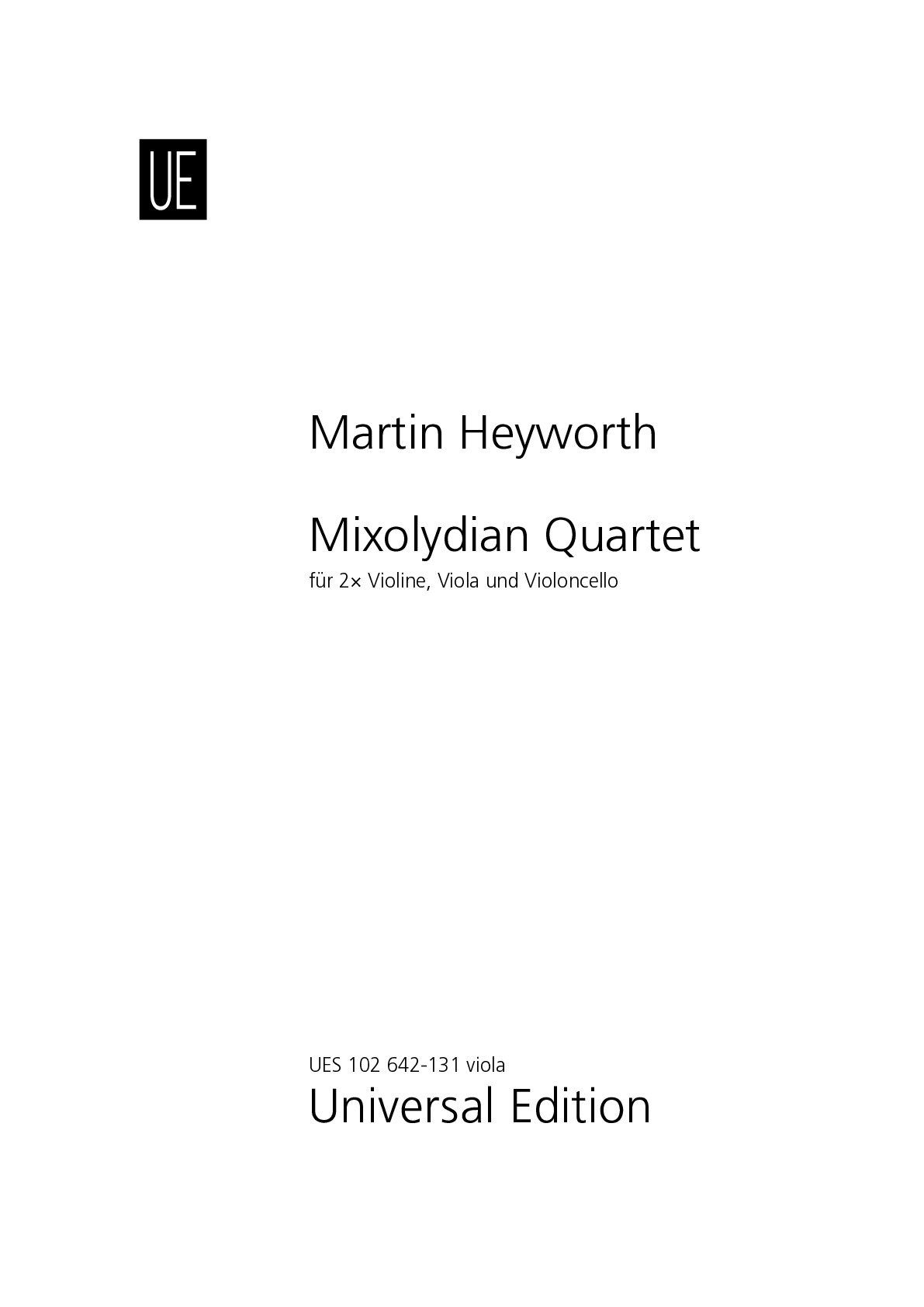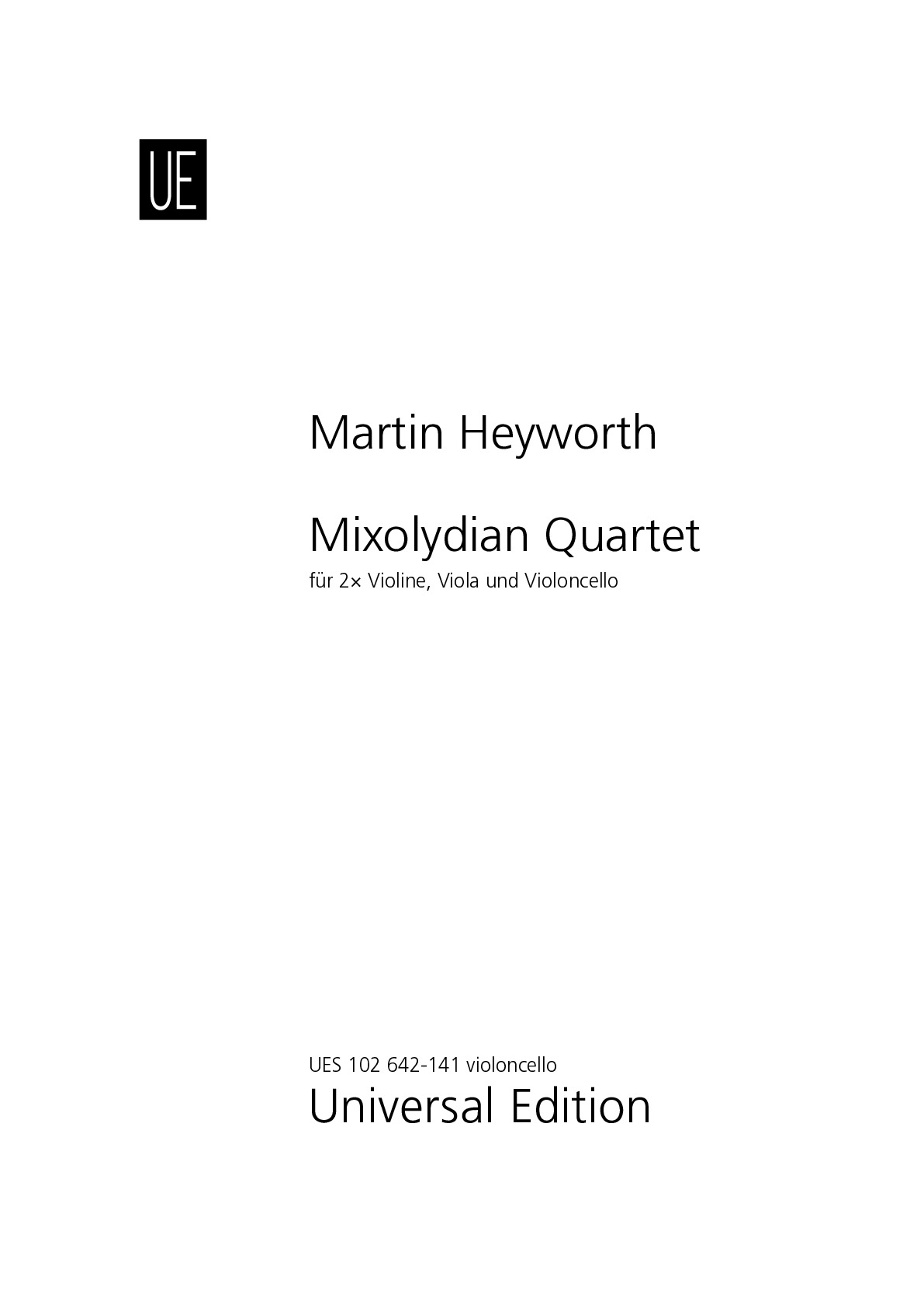

Martin Heyworth
Mixolydian Quartet
Duration: 29'
Instrumentation details:
1st violin
2nd violin
viola
violoncello
Mixolydian Quartet
Work introduction
An initial version of this quartet was completed in October 1976, when the composer was based in England (at Oxford). The work was revised in 1992-3 (in San Francisco, California), and again, to a limited extent in Philadelphia (Pennsylvania) in 2020 and 2022. Flattening of the 7th degree of the scale (leading note) is the origin of the "Mixolydian" title for this work, of which the overarching tonality of the two outer movements is B major.
The quartet begins with a slow introduction in no consistent key, which leads to a moderately paced sonata-form movement with two thematic ideas. Between the end of the exposition (a section that is not repeated) and the start of the development, the introduction is recalled. In the development, the two thematic ideas from the exposition are explored in the reverse order from that of their original presentation. A sudden shift from E flat minor harmony to B major harmony signals the start of the recapitulation, which eventually leads to another reminiscence of the introduction and three bars of silence, followed by a relatively short, fairly slow, second movement. The prevailing dynamic level in this movement is low although, roughly half-way through, there is a brief 'panic attack', involving a crescendo and diminished seventh harmonies. Later, there is another transient upsurge in the dynamic level, after which the movement comes to rest on an F sharp major chord with the mediant (A sharp) in the bass. This A sharp is then 'reinterpreted' as B flat, for the start of the scherzo-like third movement, whose principal key is B flat major.
This third movement comprises two moderately paced outer sections enclosing a faster central portion. Soon after the start of the first section, a sudden key change from E flat major to C major, along with an increased dynamic level and use of the open C strings of the viola and 'cello, amplifies the energy. The central section of this movement is the fastest part of the work up to this point, and includes bagpipe-like drones in the lower strings, oscillating between key centres a whole tone apart (B flat and A flat). The third movement leads without a break into the finale, which begins with another revisitation of the slow introduction - more ominously than previously, as a result of tremolo, playing at the bridge (sul ponticello), rising and falling dynamic levels, sudden silences, and two loud chords shortly before the start of the main part of the finale - a sonata-form structure with optional repeats of the exposition and of the development-cum-recapitulation.
The initial theme of the main part of the finale (after the slow introduction) is a speeded up, and rhythmically altered, version of the thematic idea that opens the second movement. Particularly in the development section of the finale, considerable tension is accumulated. Factors that contribute to this situation include syncopation and counterpoint - for example, quasi-canonic writing in which pairs of instruments (first violin and viola; second violin and 'cello) present different bars of a two-bar melodic 'cell' simultaneously, just before the start of the recapitulation, into which the development section drives forward relentlessly. The energy level is not lowered appreciably in a coda that concludes the last movement, during the final bars of which the underlying rhythmic pulse (3/4) is altered to 2/4, when the work reaches landfall in B major.
Tempi in the four movements of the work are as follows:
I. Adagio e Mesto
Moderato
II. Adagio
III. Un poco Allegro
Più Allegro
Un poco Allegro
IV. Adagio e Mesto
Allegretto energico
This quartet was read (played privately) by the Philadelphia-based Wister Quartet in December 2017. The autograph score of the 1992-3 version of the work, from which the published (definitive) version shows some relatively small differences, was donated to the Cambridge University Library in 2016; it is bound together with the 1993-4 autograph score of the same composer's Quartet in F minor. The first public performance (world première) of the Mixolydian Quartet was given by the Wister Quartet at the Academy of Vocal Arts in Philadelphia, on the 4th of December 2023. During the rehearsals leading up to that performance, some very minor editing of the work was done; the resulting changes are reflected in the published score and parts, which now bear the date 2023.





